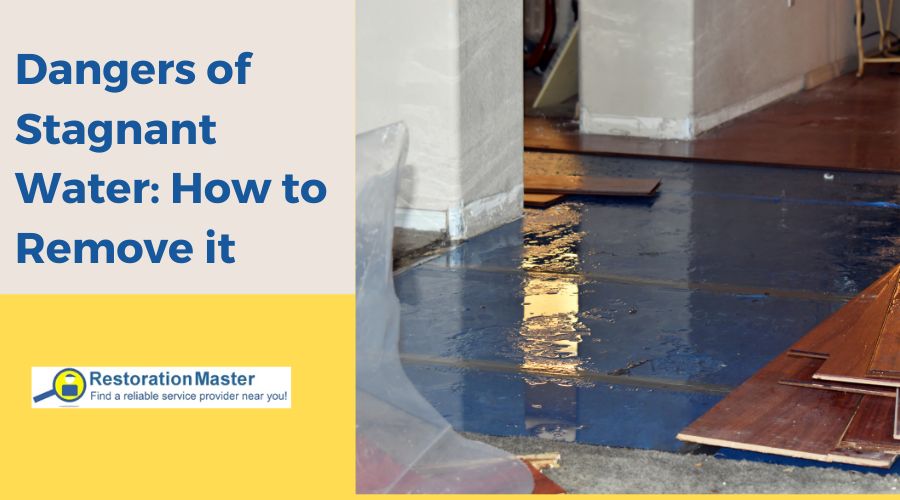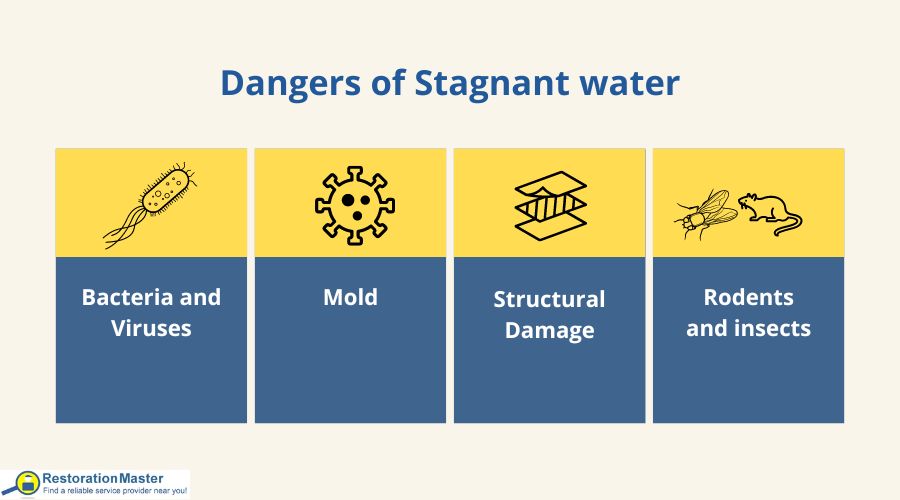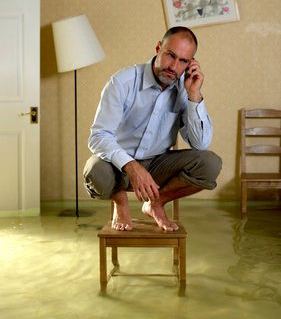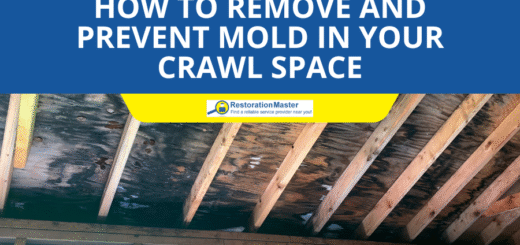The Dangers of Stagnant Water and How to Remove It

Stagnant water at your home or business can happen due to a flood. If you let the water sit, it can create major damage as it will soak into your home and can cause a breakdown of the structureStructure refers to the framework or components of a buildin... More of your property. Aside from structural damage, it can affect your health negatively as well. It is important to clean up stagnant water as soon as possible to avoid property damage and health risks.
What is referred to as stagnant water?
Stagnant water happens due to water settling inside or outside your home. Generally, the water outside will absorb into the ground. However, inside your home, stagnant water can take days or weeks to dry which will cause moldMold is a type of fungus that grows in damp or humid conditi... More and bad odorAn odor is a smell, often detectable by the human nose, whic... More. It is always best to remove stagnant water as soon as possible to avoid further damage. The quicker you remove the stagnant water, the easier it will be to save your carpeting, drywall, and any wooden items.
It is important to know the process of removing stagnant water from your home. If you do not have the proper equipment, you should try renting it from a local hardware company, or if the affected area is very large and you don’t think you can handle it yourself, you should hire a professional water damage removal company to help you. Generally, if you will be doing the cleanup yourself, it may take up to three days and can cost from $600 to $1600 or more. It is difficult to know the exact cost of fixing water damage at your property because it will depend how much water needs to be cleaned up, how large of an area is affected, how much time it will take to clean, and how much reconstruction needs to be done. However, if you have decided to do the water damage cleanup yourself, the supplies you will need include towels, bucket, mop, rags, soap, and bleach. It is also crucial to have a pump, high-velocity fans, dehumidifierA dehumidifier is a device that removes excess moisture from... More meant for structural dryingDrying is the process of removing moisture from materials, s... More, and a wet-dry vacuum on hand to make it easier to clean up the extra water.
How to Effectively Remove Stagnant Water in 6 Steps
Follow these steps to remove stagnant water from your home:
- Get rid of the stagnant water:
By using a pump, remove as much stagnant water as possible. However, if you are working with shallow water, you may be able to use a wet-dry vacuum or towels.
- Remove damaged items:
If you are facing damaged drywall or carpeting for example, and you are unable to save it, make sure to dispose of it. Everything that can be saved should be removed from the property or moved out of the way so that water does not damage it further while you are cleaning up.
- Dry the property:
It is important to use fans and dehumidifiers to dry out your home so that moldMold is a type of fungus that grows in damp or humid conditi... More does not form, and you have a chance to save your property from structural damage. If you do not own this equipment, make sure to rent it from a local hardware store.
- Fix the source of water damage:
Cleaning up the already damaged areas of your property is great; however, you should fix the issue that caused the water damage in the first place.
- Disinfect and clean all affected areas:
These are important steps that help prevent bacteria and moldMold is a type of fungus that grows in damp or humid conditi... More from growing on various surfaces. Clean all areas with soap and water. The easy way to do so is to use one cup of bleach and a gallon of water to clean and disinfect everything.
- Restore and rebuild your property:
All damaged areas on your property should be restored. This may include cleaning or installing a new carpet, removing and replacing drywall, repainting etc.
Why is stagnant water dangerous?
Stagnant water may carry a health risk such as E. coli, Legionnaires’ Disease, and even Nontuberculous mycobacteria (NTM). Overall even clean water can become festered with bacteria and moldMold is a type of fungus that grows in damp or humid conditi... More. You should never try to cook or drink this water.

The dangers of stagnant water
- Bacteria: You should be aware that it takes 48 to 72 hours for standing water to grow bacteria. Salmonella is the most common, however, various types of bacteria may form.
- MoldMold is a type of fungus that grows in damp or humid conditi... More: If your property is wet for a prolonged period of time, it can grow moldMold is a type of fungus that grows in damp or humid conditi... More in various areas such as walls, flooring etc.
- VirusesViruses are microscopic infectious agents that can only repr... More: It is very easy for virusesViruses are microscopic infectious agents that can only repr... More to form when there is stagnant water. This includes the Norwalk virus and various rotaviruses.
- Parasites: The most common virusesViruses are microscopic infectious agents that can only repr... More found in water are Entamoeba, Giardia, and Cryptosporidium.
- Structural damage: If the structureStructure refers to the framework or components of a buildin... More of your home stays wet for a prolonged period, it can cause the breakdown of those materials which makes them unstable. Some structural dangers you should be aware of include mold growth, swelling cabinets, ceiling leaks etc.
- Insects and rodents: Anytime you have stagnant water, it can attract rodents and insects. Various insects can carry different diseases such as malaria, West Nile virus, and even Zika fever. Rodents such as rats and mice are known to carry diseases.
Stagnant water is a health risk for you and your family. This is why it is important to react quickly and get it cleaned up. It can cause E. coli, Entamoeba, Giardia, Malaria, MoldMold is a type of fungus that grows in damp or humid conditi... More, Norwalk Virus etc.
Preventing stagnant water at your home
It is important to know how to get rid of stagnant water at your property just in case you experience it at some point. However, the best thing to do is to prevent it in the first place. Here are some things you can do to prevent stagnant water at your home:
- Regularly check your plumbing for issues
- Check your shingles and gutters
- Check for water seals around your doors and windows
- Any low spots in your back and front yard should be eliminated
- Make sure to grade soil to drain away from the foundation of your home
Professional Removal of Stagnant Water

Have you experienced stagnant water at your property, and need help removing it? Call a professional that provides sewage cleanup Immediately. Whether the stagnant water at your property was caused by a flood, leaky appliances, burst pipes or plumbing issues, they have the proper equipment and methods to remove the water, dry out the affected areas, and restore the damage. Quick water mitigation services will also prevent structural damage and the formation of moldMold is a type of fungus that grows in damp or humid conditi... More.












